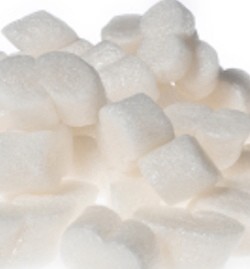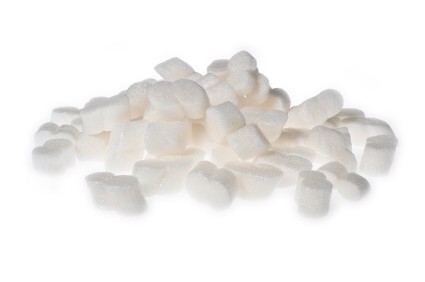Swimming against the Tide
Polymers are the long-chain molecules in every plastic telephone and faux-leather jacket. Recent experiments found that polymers in a solution that isn’t at a uniform temperature behaved in an unexpected way, with the longer molecules drifting toward the coldest region and the very shortest ones drifting toward the warmest region. A theoretical study in the 20 February Physical Review Letters explains these puzzling observations. It describes how Brownian motion of a polymer, interacting with the solvent molecules, can generate movement opposite to the uniform drift toward the cold that researchers normally expect. The finding shows how classical treatment of an elementary problem in physics–diffusion in a system with spatially varying temperature–can still yield surprises.
Polymers are strings of identical molecular units that can be made to any length. As such, they make ideal subjects for studying how diffusion varies with molecular size while chemical properties remain unchanged. To understand their behavior, Alois Würger of the University of Bordeaux in Talence, France, models the solvent in which the polymers are dissolved as consisting of spherical beads that have short-range, van der Waals attraction to one another. These attractions cause solvent molecules to huddle together. But in a temperature gradient–with one end of the solution hot and the other end cold–the molecules at the warm end have greater average velocities than those at the cooler end, forcing them to stay, on average, further apart. So the temperature gradient translates into a density gradient.
Now add polymers, represented as chains of similar-sized beads that are also attracted to other molecules. This van der Waals attraction causes them to crowd together with as many solvent molecules as possible, which creates a tendency for them to move toward denser, cooler regions of the solution.
In this picture, the drift velocity of polymers is independent of their size, in essence because the short range of van der Waals attractions means that beads feel no effects from distant solvent molecules or polymer units. Each bead doesn’t “know” if it’s in a long or a short polymer. But some new studies of the polymer polystyrene dissolved in toluene have shown that the drift velocity begins to fall for polymer lengths of less than about 100 styrene units, and that single styrene molecules move in the hotter direction rather than the colder [1].
To explain this surprising finding, Würger considers what happens as a polymer chain undergoes Brownian motion, wriggling about its mean position in a random way. If a bead jogs to one side, it creates some space on the opposite side that’s quickly filled by solvent molecules rushing in. But there’s an asymmetry. Solvent molecules, like polymers, prefer denser regions of the solution. As a result, they are slightly more eager to fill in the cool space created when a polymer bead moves to the warmer rather than the colder side of its starting position, and this difference turns the random jiggling of the polymer into a net motion toward the warm side.
The larger the polymer molecule, the less random motion it’s likely to experience, because the Brownian motion of many beads on a chain tends to cancel out. So the drift toward higher temperature is only significant for the shortest polymers. Matching the bead model to relevant parameters of polystyrene and toluene provides good agreement with the reported variation of drift velocity with polymer length, Würger found.
“This is an extremely interesting paper” says Dean Astumian of the University of Maine in Orono, offering “a lovely example of coupled transport” in which heat flow and molecular motion influence each other in a novel way. And as a possible practical application, he can imagine a continuous separation technique by which particles fed into a suitable medium would separate by size, small ones going one way and larger ones the other.
–David Lindley
David Lindley is a freelance science writer in Alexandria, Virginia.
References
- J. Rauch and W. Kö, “On the Molar Mass Dependence of the Thermal Diffusion Coefficient of Polymer Solutions,” Macromolecules 38, 3571 (2005); D. Stadelmaier and W. Köhler, “From Small Molecules to High Polymers: Investigation of the Crossover of Thermal Diffusion in Dilute Polystyrene Solutions,” Macromolecules 41, 6205 (2008).





